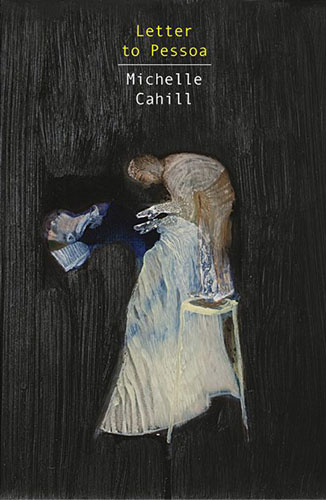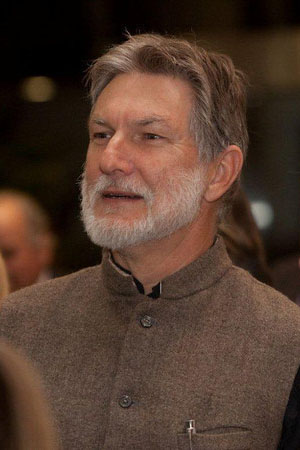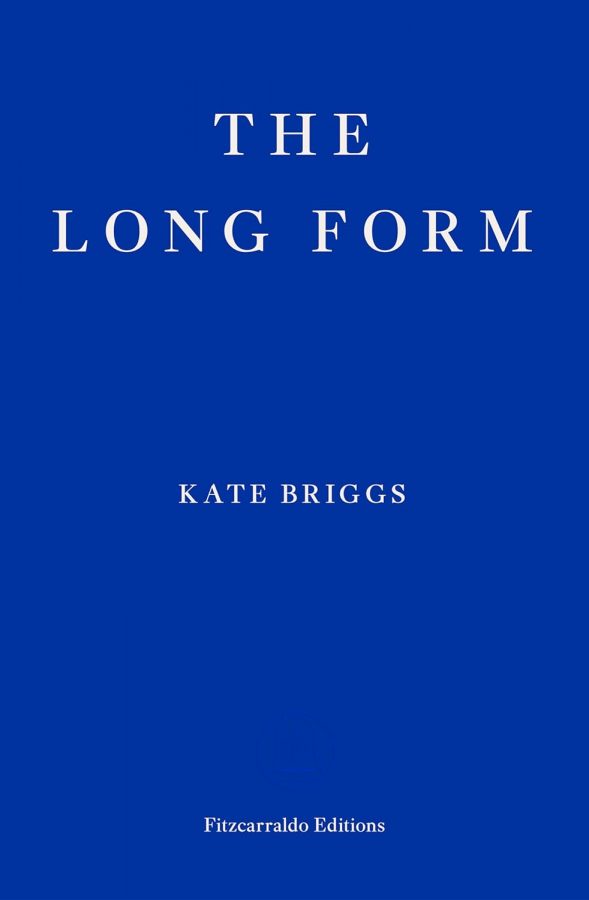Letters to who? Yes, I know that grammar says it should be ‘whom’, but the sense is not that: it’s the colloquial implication that the addressee is not known. Who is the addressee; what is the address? Does the letter return to sender? Does it circulate endlessly, finding temporary lodging then being sent on?
When I was a boy living in a then-rural town called Salisbury, my parents received a letter from Sydney a year after it had been posted. It had gone to Salisbury, England, then Salisbury, Rhodesia before arriving north of Adelaide. It might also have gone to Queensland or North Carolina, to a university in Maryland or to hotels in New South Wales, Hong Kong and New York. It was a global network even in the 1950s thanks to empires new and old: connected in a semblance of order and yet disparate and chaotic.
Michelle Cahill’s story collection is addressed, Letter to Pessoa. Many Australians will know little of him or his whereabouts, but he too illustrates the confused but productive circuits of correspondence under globalising modernity.
Fernando Pessoa was born in Lisbon (1888) but raised in Durban (his stepfather was consul to Natal), and educated in South Africa. He published poems and essays in English under names such as C.R. Anon and David Merrick, then returned to Portugal at 17. When the universities closed during political strife, he lived in the Lisbon library, educating himself, and then worked for a succession of commercial companies and as a translator. He joined other young writers to promote modernism in Portugal, writing as Alvaro de Campos, and as Bernardo Soares recorded his wanderings around the city in The Book of Disquiet. He translated Whitman, Poe, O. Henry and Hawthorne and books of theosophy into Portuguese, the last inducing him to become an automatic writing medium to assorted personae including Alberto Caeiro, the more cerebral Ricardo Reis, and an astrologer writing as Raphael Baldaya. Much of his work was published late in life or posthumously from individual magazine pieces and piles of manuscript left in a trunk, the main work of verse being ‘Alvaro de Campos’s’ Mensagem [Message] (1934) and ‘Soares’s’ Livro de Desassossego [The Book of Disquiet] (1982), a novel that has attained international recognition in many translations. The uncollected writings clustered around themes of silence, dreams, failures, absurdity and bare truth, and were issued from over seventy different personae that Pessoa called ‘heteronyms’. He wrote in ‘Autopsicografia’/ Autopsychography’: ‘O poeta é um fingador’ (the poet is a faker/artificer’) and in the poem of the same title as its first line: ‘Não sei quantas almas tenho./ Cada momento mudei./ Continuamente me estranho.’ (I don’t know how many souls I have. / Each moment they change. / I’m continually estranged from myself.’). Returning his ‘letters’ to sender remains a complicated process: they circulate amongst editors and translators and across websites, wandering like their author/s.
What is a heteronym? Not a pseudonym: it’s not a substitute or mask for a one’s ‘real’ arche-nym. Pessoa’s alter egos had their own biographies and individual styles. It doesn’t imply any original authentic singularity. At its most reductive, it’s a twinned opposition: ‘husband’ is the heteronym for ‘wife’. As a translator, Pessoa would have known that a heteronym is a word for something in one language that is the translation of a name in another: sepatu in Malay as a translocation of sapato, the Portuguese for ‘shoe’.
Pessoa’s heteronyms owed their existence to his theosophical beliefs, modernist aesthetics and his translation work as much as to his bicultural upbringing. Michelle Cahill anchors his spirit figures in history and her own life. At the same time, the kaleidoscope of identities assumed in relation to the canonical names they write to are merely spectral mediums: they do not cohere into a stable entity, nor do they have any direct tie to the author. They do, nonetheless, allow her to work with and through aspects of her postcolonial, diasporic selves. Her family’s origins in Goa, once a colony of Pessoa’s Portugal, and her own birth in Kenya, another ex-colony of Britain, like Pessoa’s Natal, make her another potential avatar of his many heteronyms, as he becomes one of hers: another figure for whom writing offers both exile and private homeland. (How young Fernando must have relished the heteronymic irony of living in a state called ‘natal’ that was not his natal state). Cahill’s time as an overseas delegate to writers’ workshops in America links her to and separates her from the major literary figures there, as her time in England connects her to English literary tradition from an outsider perspective. As a non-Aboriginal woman of colour in Australia, both medical practitioner and poet, Cahill inevitably plays several heteronymic roles. These are neither the fast and loose play of cosmopolitan postmodern pluralist identity, nor are they completely the agonistic entrapments of diasporic minority selfhood. They are both real-life subjectivities and literary devices for managing and expressing them.
In a number of talks and essays, Cahill has criticised an Australian literary mainstream for gatekeeping the national paddock. She configures this as separating the old Anglo prize flock from the small and mixed minority herds. To some extent the paddock gate was pushed open long ago, thanks to advocates for migrant writing such as Peter Skrzynecki, Manfred Jurgensen and Sneja Gunew – but it could be argued that newer arrivals still have to push hard to get through. It could also be argued that any new lamb of any colour or distinctive bleat has to go through a selection process — it’s the way the farm operates. However, to the extent that the paddock remains an exclusive enclosure, we might ask what strategies the new arrival can adopt to be recognised and given entry.
One is to protest; this may work or it may result in your being pushed to the back of the queue so you can continue to shout louder with more justification but less chance of a warm reception. Cahill has kept her protests at a tactfully muted volume — she has, after all, as she acknowledges in a 2014 interview in Muse India, done quite well in the general milling of the literary herd: writers’ workshops in the US, an Australia Council grant, a Poetry Australia Foundation scholarship. The person speaking out about silencing and marginalisation is perhaps a heteronym, representing others of her constituency. In that role, Cahill has adopted another strategy: do your own thing outside the fence, working for success until you have to be noticed. With others, she has run the online magazine, Mascara Literary Review since 2007. Once Mascara focused on ‘migrant’ voices, but it is now very much an international collection of talent as well, concentrating on the world’s majority of non-Anglo writers, in English or in translation. This led to her co-editing Poetry Without Borders (2008) and later, Contemporary Asian Australian Poets (2013). She has also published her own poetry with journals and small presses in the traditional manner of gradually accumulating respect among readers on both sides of the fence. Apart from overseas publications, Australian readers would recognise a typical poet’s progress through Going Down Swinging, Ulitarra, Cordite, Southerly, Meanjin and on to a book with Five Islands Press (Vishvarupa 2011).
Now she takes a different approach: writing ‘letters’ to the big names inside the fence and inside other literary paddocks of the global mainstream — Derrida, Genet, Woolf, Larkin, Borges, Nabokov, Coetzee, Tadeusz Rózewicz (and one to Neil Young as well). It’s a cheeky gesture, saying ‘See? I can speak your language too.’ It’s also a ‘writing back’ critique in the established postcolonial sense: an assertion of difference that is not other, that cannot be simply dismissed. Writing ‘after the style of’ the big name is both homage and satire, ventriloquism and translation. To cite her Muse India interview again, Cahill’s ‘syncretic and ambulatory’ works of transcreation both admit and celebrate the unheimlich ‘wreckage and clefts of a postcolonial identity’. They refuse to be ‘co-opted into other narratives’ – but also claim a speaking position in possession of and dialogue with those narratives. The result is heteronymic writing. Its germ is sprouting in Cahill’s 2012 essay on literary gatekeeping and postcolonial writing, ‘The Poetics of Subalternity’. Aware of the limits of theoretical abstraction, but also the use of analogies like the subaltern to think about material situations, she asks:
So how does this situate poets of the Asian diaspora within Australian postcolonialism? Spivak attributes diasporic qualities to subalternity when she defines it as a differential space, a polytropos, wandering, fluent in its forms. Polytropos was Homer’s epithet for Odysseus. This word in its Greek origins describes the turns and twists of fortune as well as the strategic resourcefulness, the many minds of Odysseus. The word also breaks down into trope, in one sense meaning ‘figures of speech’.
Such polytropic writing is of use ‘to find a language for this contingent identity’ that is the transnational writer’s, and perhaps a strategy by which to slip past the rocks of cultural power.
Cahill’s poetry also gives some inkling of her latest work. The Accidental Cage moves from female to male to indeterminate narrators, from Manhattan to Enmore to London to Bangkok, hospital emergency rooms to beach holidays, and mixes sensual poems about ‘the price you pay for being loved’, sensory-laden poems on the consolations of nature, and poems of travel seeking Buddhist solace for suffering. The writer declares: ‘Not quite assassin, I felt a stranger to my own life.’ (‘Platinum after Shining’) and projects the immigrant story onto an introduced plant: ‘I arrived by circumstance/ a transplant on a fringe of tarmac. / Taking root, I learned to please/ … practising/ the humility that men seek’, and whispering quietly (‘Black Bamboo’). In Vishvarupa, the spiritual quest continues, recording travels in India against a background of family and Australian settings. ‘Ophelia in Harlem’ in the first book transmutes into ‘Kissing Hamlet’ in the second, and Hindu gods are translated into Australian settings (‘Parvati in Darlinghurst’). ‘Kali from Abroad’ blends the goddess of retribution, time and death with Kiss, a haka, Octavio Paz, Marcel Duchamp and Robert Pirsig’s zen motorcycling. Vishvarupa is more thoughtful (also more overtly feminist) than The Accidental Cage, and its play with cultural icons prepares the ground for Cahill’s stories. ‘Dying to Meet You’, for example, is a ‘Letter to Aravind Adiga’ in verse, and a visit to Lisbon anticipates the focus on Pessoa, inducing in the touristic ‘lover of the strange/ distant/ foreign’ a kind of panic: ‘Uncertain if it’s me, a fragment, the precise moment/ I’ll cross the border… / … There’s/ a clamour in my throat, a small emergency of words.’ (‘Amante de lo Ajeno’).
At the Sydney launch of Letter to Pessoa, Michelle de Kretser noted how Cahill’s poetic skills inflect her prose, both infusing it with different rhythms and enlivening it with arresting images: rising the morning after, the narrator in the title story writes, ‘Alcohol settles like a carpet of snow falling softly in my head’. We can hear the meter and sound patterning in a phrase describing a bar-room, ‘the floor trashed with butts and greasy smudges’. At Birkenau, the narrator hears ‘words delivered by tour guides to small groups huddled around them in little parcels of truth’. Thought and action are rendered through reverie and dream, retrospection and present flow of sensory impressions. Translations from poetry to prose are accompanied by an undercurrent of thinking about translation from one language to another. A letter to Derrida alludes to his essay on the ‘mother tongue’ being already an/other language, with some resonance for a writer whose linguistic ancestry is multiple. Many of the ‘letters’ rely on or mention actual translation (from Polish, French, Russian, Spanish, Portuguese, Arabic).
The collection’s links to Pessoa’s symbolist, proto-surrealist influences, and Cahill’s own negotiations between East and West, are hauntingly indicated in the book’s dark cover which displays a painting by Madeleine Kelly, ‘Treatment for Hysteria II’. This appears to show a statue of the Buddha pushing the head off a Victorian lady. What does it mean – stop thinking? Let the body take over? Is it a man dispensing with the inconvenience of a thinking woman? Or is he attempting to catch the falling head and restore it to its trunk? Is the whole thing a dream allegory of misconnection and loss? As the thinking/ writing interlocutor of Pessoa says:
What happens is never certain. All that we have are fragments of the mirror. Not cold or sharp in their edges but precise and dazzling when the light sweeps back into them and we see outside of time.
Getting the author of Questions of Travel (who is also a former editor for Lonely Planet) to launch Letter to Pessoa was appropriate, as there is a lot of travel behind these stories: characters wander the globe, sometimes intensely, often casually, but always fleetingly connecting with others (‘Disappearing’ is a good example). An air of melancholy pervades their reflections, such as this one, written to a Polish poet after the narrator’s return from Europe:
‘The day has swallowed darkness,’ you write and I think of the dark vastness of my journeys.
I have spent most of the week bunkered at home, my body confused by the altered time zone. It seems as if the house became disorderly in my absence. The cups and bowls are on the wrong kitchen shelves, the garden has grown wild with vines and leaves are being eaten at the tips, curled under by a mesh of spiders. It takes a few hours in the burning sun to prune, weed and water, the results bringing partial recovery. I have half unpacked, hand-washed clothes. I have opened and sorted mail, mostly bills. I’m nauseous. Not hungry. When I sleep it is in four-hour cycles. Then I awake, alert again, feeling desolate, and read your poems, your mother’s letters, your Gliwice diary. Nobody calls me.
Settings are characterised by finely observed details of atmosphere and location. The writer knows that someone in Pessoa’s Lisbon will be likely to enter a bar and order a ‘2, 4, 8’; she has heard the birdlife of Africa: ‘the ibises ripped the heart out of the evening, and the hammerbirds xylophoned monotonously’. Such details are held in check, however, so the stories do not end up sounding like a guidebook. ‘Duende’ does indulge in the terminology of the bullfight – but that’s unavoidable. I did wonder at two details, one probably a deliberate mark of literary estrangement, the other more like a repeated typo. In ‘Letter to Pessoa’ and ‘Duende’, both Spanish and Portuguese young ladies are referred to as anglicised Italian ‘signorinas’, and plazas in Lisbon, Seville and Barcelona are all ‘placa’. (Lisbon would be praça, Seville, plaza, and Barcelona, plaça.) Regardless of such quibbles, the collection tells us that fiction is not travelogue: we see Kenya through the eyes of a cat, Hong Kong from the apartment and office of a lawyer. If there’s a touristic element in the wanderings of restless souls in Kathmandu and Poland, life on the road in America is seen in retrospect from the cluttered rooms of an old rock star.
Cahill’s worries about being corralled in the migrant writers’ pen should be dispelled by this collection. Its international range of settings and intertexts refuses any limiting categorisation in the same way that Nam Le’s The Boat refuses to be positioned as a book of ‘boat people’ stories. Both show how the diasporic subject can write across personae to construct an identity as citizen of a global literary republic. At the same time, they both show very clearly how that ideal space abuts and overlaps with real worlds of social inequality and suffering in which their writerly personae are also implicated. A cat’s first-person view of the world is perhaps not entirely convincing in ‘Biscuit’, but its experiences indirectly report on the violence prior to Kenya’s independence and the international trade in wildlife, and loosely parallel the flight of refugees (not all of whom end up as pets of the well-to-do, as ‘A Wall of Water’ and ‘Sleep Has No Home’ make painfully clear).
The conceit of heteronymic address stretched to cover a collection carries the risk of making the book appear to be an overly programmatic contrivance, rather like a clever topic set for a creative writing project. Cahill adroitly varies the recipe. ‘A Wall of Water’, ‘The Sadhu’, ‘Finding the Buddha’ and ‘Fever’ continue the spiritual quest of Vishvarupa’s poetry, depicting women visiting Thailand and Nepal to resolve their pasts, finding fleeting moments of calm, ‘something visionary and tender’, but nothing that allows any settling into the locale. The first story tells a tale of Sarita’s migration from India to Sydney, her growing up to become an activist against racism and the mandatory detention of refugees, and her horror at the Christmas Island shipwreck and drowning of refugees. ‘Sleep Has No Home’ is a dramatization of the violent uprooting and flight of refugees rendered the more bleak for being recounted from a child’s perspective. Sarita is a connective thread across some of these stories, and Cahill refers to her as one of her heteronyms. This is a shift from Pessoa’s use of the term, in that Sarita is an alter-ego character written about by the one author, not an alternative writing persona, but like Pessoa, Sarita is a restless soul trying to handle the clash between past and present, outer and inner worlds, and she illustrates a point about characters not being their author, about the female writer being able to inhabit the persona of an Italian-American male (as in ‘Disappearing’) or a drug-dealing jailbird (‘Letter to Jean Genet’ — a telling critique of the production of that literary persona).
Sometime the master idea of ‘letters to writers’ is present but subtly obscured. ‘Dirty Ink’ is an up-to-the-minute story of blogs and sexting in which a lonely divorcee gets off on her passion for an unknown professor (possibly dead, perhaps the man next door), whom she imagines to be taunting her by ignoring her posts, and whose spit of rejection, like her own ‘dribble’, is the stuff from which her writing (dirty ink) is made. The narrator first appears in a café years earlier writing an essay on Georges Bataille, who, like Pessoa, wrote under other names. He also wrote about eroticism and transgression, knew Jacques Lacan, and belonged to a surrealist group, the Acéphale (echoed by the headless figure on the book’s cover). The reader doesn’t need to know any of this to see that the narrator’s desire is driven by lack for which she contrives ‘proxies’, none of whom are as compulsively generative as the eye/void fixing the writer. Virginia Woolf asked ‘who shall measure the heat and violence of the poet’s heart when caught and tangled in a woman’s body?’; there’s an allusion to this question elsewhere in the collection but it might well apply here too. Erotic encounters provide one strand of the collection. ‘To Show a little Hustle’, for this reader, has some sentences that try too hard for effect within a longer tale that fails to generate the kind of impact it appears to try for, but the shorter ‘The Flower Thief’ works well through symbolist and dramatically surreal touches (with nods to Jean Rhys and Frida Kahlo).
This is a very intelligent, very literary collection. Readers will be constantly impressed with the detailed reading and sharp analysis behind the ‘letters’. In conception and style, ‘Borges and I’ is a tour de force, though it may go on a little too long for some readers. An unnamed correspondent writes a love letter to ‘dearest’ Derrida, ending it with the words, ‘Without you I am powerless’. The conventional lover’s plaint is made to carry the idea that (letter) writers have meaning only in relation to readers, words only in relation to other words in a language system, literary practitioners in relation to philosophical theorists. Writing and writer become the creatures of the addressee as well as constructions of the addresser, and all enters an endless cycle of textuality. The writing persona becomes a set of grammatical positionings:
this author, this narrator, this third person, is another than me entirely. She is a whole made up of parts. She is a ghost-ship, with a phantom crew navigating the uncharted.
and so we are drawn back to the concept of heteronymic multiple identity.
The drawback for the collection is that the audience best competent to appreciate many of the stories is limited. Unless we have read Coetzee’s Foe or Disgrace, for example, we will not ‘get’ many of the points being scored against its protagonist if not also its author (another player with personae). We need to know that Cahill’s heteronym here is Melanie Isaacs, the coloured student lover of Coetzee’s white South African university teacher of Romantic poetry arraigned for sexual harassment. We need to know the debate over the relation of Coetzee’s textual politics to the politics of race in South Africa. This is why ‘Duende’ deservedly won the Hilary Mantel International Short Story Competition: it is only surreptitiously a ‘letter to Lorca’, and stands on its own merits as a dramatically moving tragedy of a gay couple (Hispanic, but not Spanish) vulnerable to the heat and temptations of touring Spain. A bullfight unleashes a torrent of poetry in Julio, but also so horrifies him as it mirrors his own battle with AIDS and the impending desertion of his lover, that he commits suicide. We can see the connections to that dangerous spirit of inspiration and destruction that Lorca wrote about, and there are echoes of his writing: ‘The river is a ballad, twisting, weeping, bleeding’ and the story ends ‘with the soft motion of pigeon wings breaking the light’. Lest we form the impression that this is heavy going, there is a lightness of touch, even a sense of fun, behind many of these stories. Lolita becomes a lustful surfie chick who flirts with Nabokov at a barbecue in Willoughby, and the Borges story includes wry comment on research programmes and politics.
In the end, as we do with all creative work not specifically didactic, we read these letters over the shoulder of the actual addressee, who writes her epistles so that they (falling into mailboxes around the globe) ultimately return to sender as mirrors in which to reveal facets of self and relationships to writing, reading and the world, leaving us all wondering, ‘Will we ever be liberated from the signifier, on which we depend’? or from the choice that beyond writing can determine our lives? I, for one, am delighted that Michelle Cahill has let us look through her heteronymic correspondence/s, and that Giramondo has again shown its discerning commitment to new ventures in literary travelling.
References
Cahill, Michelle. The Accidental Cage. Brisbane: Interactive Press, 2006.
—Vishvarupa. Parkville: Five Islands Press, 2011.
—(ed.) Poetry Without Borders. Warner’s Bay: Picaro, 2008.
—‘From Silence to Rhetoric’ JASAL 12.2 (2012).
—‘The Poetics of Subalternity’ Mascara Literary Review June 2012.
—(ed. With Kim Cheng Boey and Adam Aitken) Contemporary Asian Australian Poets. Glebe: Puncher & Wattman, 2013.
—Interview with Jaydeep Sarangi, Muse India 53 (2014) on line.
—‘Who is Lobbying for Migrant Writers?’ Sydney Review of Books, November 2015.
—Letter to Pessoa. Artarmon: Giramondo, 2016.
Heteronym’, The Shorter Oxford Dictionary. Oxford: Oxford University Press, 3rd edition, 1973.
Pessoa, Fernando. Selected Poems. Trans. and Introduction, Johnathan Griffin. 2nd edition. London: Penguin, 1982.
—The Book of Disquietude. Trans. and Introduction, Richard Zenith. Manchester: Carcanet, 1991.
—‘Os 10 melhores poemas de Fernando Pessoa’







